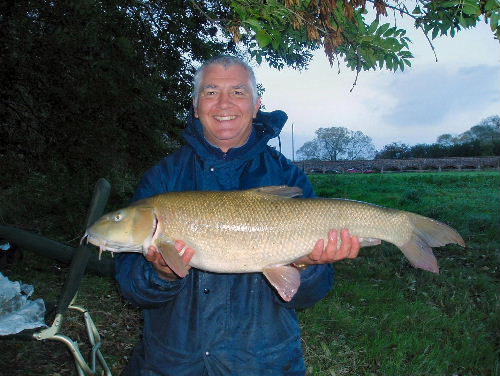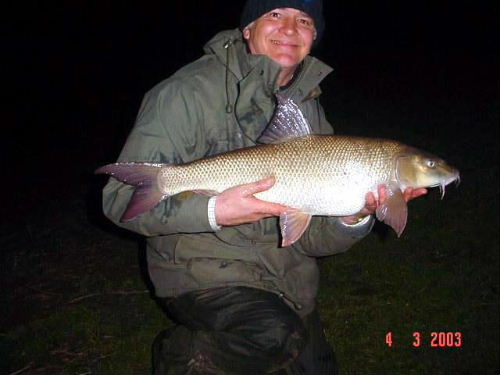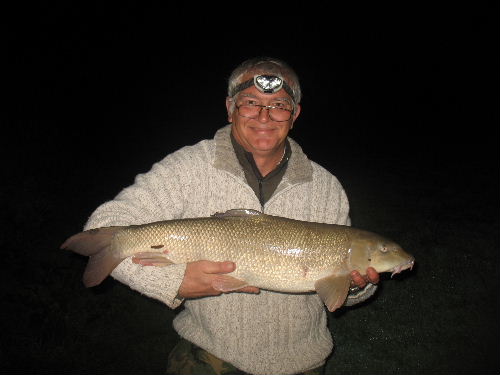Barbel Fishing on a Budget by Graham Elliott
I have been in a pretty fortunate situation over the past ten years by being able to fish for barbel three or more times a week overall. It’s meant some sacrifices in financial terms, not having a regular income and latterly any bank saving giving pretty much zero returns, but I would not have swapped it for the world. As the saying goes…. you’re a long time dead!
It’s been compensated somewhat by a hard working wife and also some income from the Guided days I have organised. It’s allowed me to feel pretty much at one with the rivers I fish and build up an intimate picture of opportunities for catching. It’s also allowed me to meet and enjoy the company of a real mixture of characters with diverse angling skills, or lack of!
One of the key elements of my lessons, and one I always hope to inspire in others, is the real need to consider other anglers fishing, and not to ruin their enjoyment by selfish and totally unnecessary feeding tactics. I hope in this short piece to extend those thoughts to others. It deals with high protein baits such as boilies and pellets.
Recent articles and TV appearances by a well know angler have featured the need to “Pile in the bait” to get results, with no clarifications on conditions, size of river or consideration of others.
One other well-known angler recently told a novice seeking advice that he needed to pre-bait with a few kilos of boilies every other day for weeks in the closed season to prepare for the start!
As most of you would realise, it’s highly likely any barbel would be up on the spawning shallows, not feeding whilst all this baiting was taking place.
Needless to say both of these celebrities are involved with bait and tackle companies!
Of course, some days the barbel may be getting their heads down and are actively feeding and large amounts of bait can work then……….but on the too frequent days that they are not so interested, or the feeding sessions are restricted to short time periods, it can have a negative result not only for the angler but also for other anglers on the section being fished.
The argument that the pellet or boilies will have broken down doesn’t hold water in my opinion. It’s still food, just in a different form. Besides, most pellets will take many hours to break down even in warmish water. Standard 10ml elips generally take over four hours even in pushing water.
Meanwhile, the angler who has taken these experts advice might have one good day, and from then on loading in a few kilos of bait as a start has become his normal method to the detriment of many. Failure to catch in the first hour often signals the implied need for a lot more bait to be launched out.
So, what might be a place to start to break down these illusions? Some examples of the most used methods I employ regarding baiting and results to hopefully convince you.
The last two 24 hour sessions on the River Trent for me have yielded 26 and 22 barbel. Total pellets and boilies used on both days – 1.5kg.
Four months on the River Wye, total Guest and self-captured barbel were 577 fish. Total pellets and boilies used in 64 sessions – 18kg
The last session on the River Severn gave me 3 barbel including 2 doubles. Total pellets used – 1kg
First day session on the Bristol Avon, 2 fish for a total of 22lb. Total pellets – 400grams
I could go on but – more importantly, the pellet figures shown INCLUDE those ground up to make a dry method type mix as a bait carrier.
Following advice to pile it in on those sessions probably would have involved the use of many hundreds of kilos of pellets and boilies, and as I have said, affected others sport and at an unnecessary cost as well.
So, trust me and once this frozen cold spell is over, if you are one of those anglers that believe more is better, try this.
Look at your swim and decide where you are going to fish. Using an open end swim feeder cast out to the spot, or just above, once on small river or 2 to 3 times on the larger ones, a mixture of sizes of pellets and/or broken/whole boilies with a wet ground pellet mix blocking the feeder ends. Adopt a dry mix for pva bag use. Once the feed has hit bottom, pull it straight out of the feeder.
Cast out again with hookbait attached after plugging the feeder as hard as you can with pellets and the ground mix and wait…………………..for at least an hour, unless the rod is pulled from the rod rest.
I assure you any fish likely to feed downstream for even hundreds of yards will know that some food is in the water and come to investigate. The mixture of food sizes will ensure some moves downstream quickly, some more slowly. Your plugged feeder will continue to release flavour and give the fish a target to move up on.
On the bigger rivers what you will find is that you can extend the catching time well beyond a “pile it in” approach although action may be a little slower to start.
On the smaller, less populated rivers, those bigger more isolated barbel may find the few bits of bait they come up for before disappearing back to the depths, have a good chance of having a hook attached, especially if you are prepared to wait it out.
The message is getting out to enlightened barbel anglers; I have been really heartened by the responses from most fishermen to this subject over the past couple of seasons. As the numbers of barbel in many rivers seem to be showing signs of declining stocks, it’s even more important.
Having fished for barbel for over 40 years, I hope you can trust me enough to give it a try.
Considerate angling with consideration for others. You know it makes sense.
Good fishing
Graham Elliott
Copyright Graham Elliott 2010







Leave a Reply